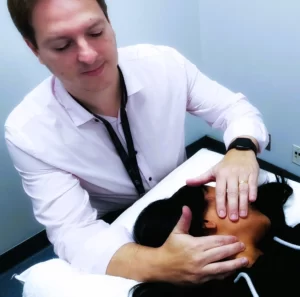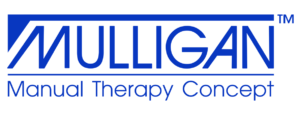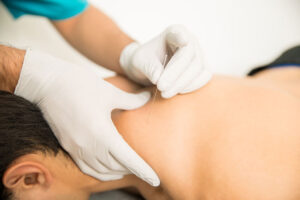Discogenic Pain: Where it hurts isn’t always where the problem is!
Have you ever experienced pain in your shoulder blade, upper arm, or even your elbow? And wondered why these areas...
During the first assessment, clinical reasoning takes place, which is like detective work in healthcare. When a physiotherapist meets a patient with symptoms, they collect clues by asking questions and conducting specific clinical tests. These clues can be the patient's symptoms, medical history, or any test results. Then, the physiotherapist uses their expertise and experience to connect the dots, like solving a jigsaw puzzle. By comparing the patient's symptoms and test results to what they know about different medical conditions, they aim to reach a diagnosis or a likely explanation for the patient's symptoms. This guides them in creating the best treatment plan to help the patient recover.
In this type of treatment, a skilled therapist assesses and treats the body using its trained hands. This approach shares similarities with that of a precise craftsman who gently adjusts muscles and joints to relieve pain, enhance mobility, and promote physical health by identifying and addressing specific bodily issues. This customized approach places reliance on the therapist's extensive training and dexterity to achieve meaningful outcomes, rather than depending solely on conventional treatments such as exercise and equipment.
Evidence-based practice for a manual physiotherapist involves integrating the latest scientific research, clinical expertise, and patient values. It entails using up-to-date, research-supported techniques and approaches to assess, diagnose, and treat patients' conditions. By combining empirical evidence with their professional experience and patient preferences, manual physiotherapists aim to deliver the most effective and tailored care to promote optimal physical well-being and recovery.
Fascial Counterstrain is a therapeutic method recognized for its potential to bolster the healing process. By gently alleviating tension and restrictions in the fascia, it can mitigate discomfort and pain related to various body areas, while also assuming a role in inflammation management. Skillful application of Fascial Counterstrain enhances blood flow and lymphatic drainage, thus reducing localized inflammation and fostering an environment conducive to tissue repair and regeneration. Moreover, given the fascia's pivotal role in coordinating bodily functions, harmonizing its tension through this technique supports overall physical well-being and mobility, ultimately amplifying the body's innate ability to heal and recuperate.

The Mulligan Concept is a well-established and widely used method in the field of physical therapy and manual therapy. It was created by Brian Mulligan, a respected physiotherapist from New Zealand, and it involves a variety of hands-on techniques and mobilizations designed to improve joint mobility and relieve musculoskeletal pain. Based on accurate assessment and precise manual interventions, the Mulligan Concept utilizes controlled, painless movements and mobilizations of specific joints in the body. These techniques are applied systematically and based on evidence, with a focus on real-time patient feedback to ensure effectiveness. The concept is commonly used to treat various orthopedic and musculoskeletal conditions, including joint stiffness, limited range of motion, and sports-related injuries, with the ultimate goal of enhancing physical function and promoting overall well-being.

Isostretching, created by Bernard Redondo, is like a special way to stretch your body for better flexibility and less discomfort. Imagine gently stretching your muscles and joints while using your own resistance, like pushing against your hand or a wall. It's a bit like a slow and controlled tug-of-war with your own body. This technique helps your muscles and joints become more flexible and relaxed, making it easier to move and reducing any tightness or pain you might have. It's a safe and effective way to improve your body's flexibility and feel better in your daily activities. So, if you're looking for a way to ease muscle tension or move more freely, Isostretching could be a helpful tool.

Clinical Neurodynamics is a specialized approach in physiotherapy and manual therapy created by Michael Shacklock. It focuses on managing nerve-related issues and musculoskeletal conditions through precise and gentle techniques. By improving the mobility and function of nerves in the body, it aims to alleviate nerve-related pain, enhance muscular function, and restore optimal neural communication. Clinical Neurodynamics is particularly helpful for individuals who suffer from conditions like sciatica, nerve entrapment syndromes, and other nerve-related disorders. It provides a systematic and evidence-based approach to address these complex issues, rooted in a deep understanding of neuroanatomy and neurophysiology.

Is a manual therapy technique often performed by chiropractors, osteopaths, or physical therapists with the primary goal of improving musculoskeletal function and alleviating pain. During this procedure, the practitioner applies controlled and precise force to specific joints in the spine or related structures. The aim is to address issues like joint stiffness, misalignment, or restricted movement, which can contribute to pain, reduced mobility, or nerve irritation. By carefully manipulating these spinal components, the technique seeks to restore normal joint function, relieve tension in surrounding muscles, and optimize the nervous system's performance, ultimately aiming to reduce discomfort, enhance mobility, and support the body's natural healing processes.

https://www.cpta.ab.ca/for-the-public/blog/what-patients-need-to-know-about-restricted-activities/
Functional Dry Needling is an evidence-based therapeutic technique to treat musculoskeletal pain and dysfunction. This procedure involves inserting a fine, sterile needle into specific trigger points or tight muscle bands in the body. The aim is to release muscular tension, reduce pain, and improve overall mobility. Unlike traditional acupuncture, Functional Dry Needling is based on modern anatomy, physiology, and scientific research, targeting myofascial trigger points and neuromuscular connections. It's designed to address a broad range of musculoskeletal conditions, including muscle strains, joint pain, and chronic pain syndromes.

https://www.cpta.ab.ca/for-the-public/blog/understanding-dry-needling-risks-and-consent/
Therapeutic exercises are prescribed by healthcare professionals to aid in recovery from injuries, improve mobility, alleviate pain, and enhance physical function. They are customized to target specific challenges and include movements, stretches, and strength-building activities. They are crucial for rehabilitation and complement other treatments to promote recovery and optimal physical health.

Get our Latest News and Health Tips
Have you ever experienced pain in your shoulder blade, upper arm, or even your elbow? And wondered why these areas...
Popliteal Artery Entrapment Syndrome (PAES) is a condition where the main artery behind the knee (the popliteal artery) gets squeezed...
In a fascinating study highlighted in Nature Communications, scientists have shown how our brain stays clean and healthy, thanks to...